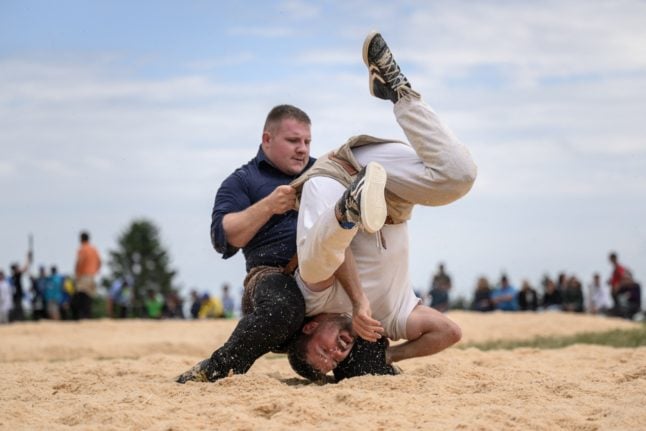At one stage in Tuesday’s quarter-finals at Roland Garros it looked like both were on their way out.
Federer was two sets to love down against Juan Martin del Potro and at the same time, Djokovic was being run ragged by Jo-Wilfried Tsonga.
But, in keeping with their superstar status, both men found a way back, winning in five sets in each case.
Federer leads their head-to-heads 14-11, but the recent outcomes between the two favour the Serb, the top seed in Paris who is bidding to become only the third man to hold all four Grand Slam titles at the same time, 43 years after Rod Laver achieved the fabulous feat for the second time.
Djokovic lost in four sets to Federer in last year’s French Open semi-finals, but that was his only defeat in their last six encounters, which notably included an epic five sets win in the semi-finals of the US Open in New York last September.
Djokovic, after saving four match points against Tsonga in a quarter-final thriller, said he knew what to expect.
“I don’t want to talk too much about Roger. We all know his quality and can always expect him to perform his best at this stage of the tournament,” he said.
“He came back from two sets down today. We both played tough matches in the last two rounds. Now we’re going to have two days off and expect an exciting semi-final.
“Last year we were part of a great match that went the distance, and he played incredibly well.
“I think for me it’s crucial to be very focused and aggressive from the first moment, because that’s something that you can always expect Roger to have, you know, that control over the opponent from the start.
“Now there is no real favorite for that match. It’s semi-finals, so everything is open.”
Federer, bidding for a record 17th Grand Slam title, sounded equally even-minded after his victory over Del Potro, which saw the Swiss star struggle for two sets before the tall Argentinian wilted physically.
“I know that I have to reach a level of 10 to play against him. So that’s all I can say. We’ll see,” he said.
“We’ll see how fit he is. I know I have to play a great match.”
Both men know that the winner in Friday’s semi-finals will likely face an even greater challenge in Sunday’s final should, as expected, six-times winner Rafael Nadal make it through.
Djokovic needed five setters in the fourth round and in the last eight to reach the semis, while Federer has lost five sets so far and looked uneasy in his fourth round match against Belgian lucky loser David Goffin.
In contrast, Nadal has roared into the semi-finals and has yet to drop a set.
Neither Djokovic nor Federer has ever beaten Nadal at Roland Garros, with the Spaniard now having a career record here of 49 wins and just the one loss, to Robin Söderling of Sweden in the fourth round in 2009.



 Please whitelist us to continue reading.
Please whitelist us to continue reading.
Member comments